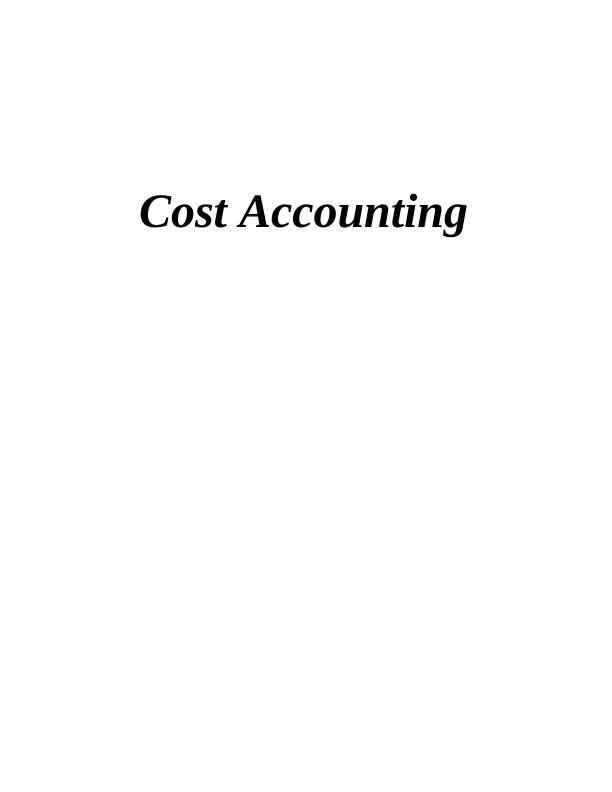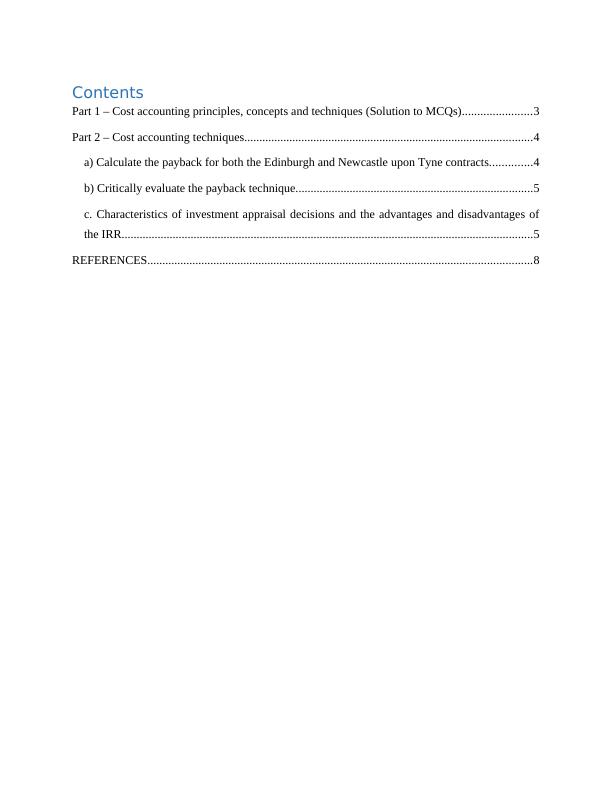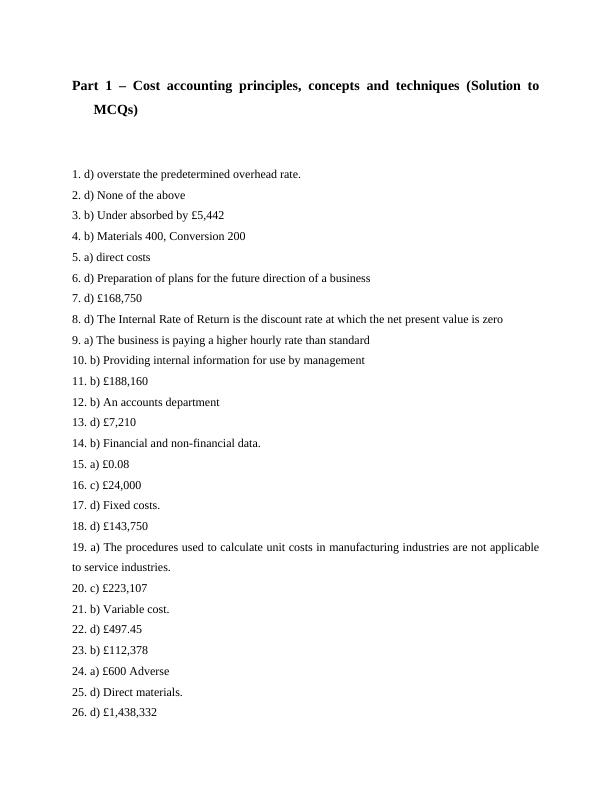Cost Accounting: Principles, Techniques, and Investment Appraisal Decisions
8 Pages1890 Words433 Views
Added on 2023-06-12
About This Document
This study material from Desklib covers the principles, concepts, and techniques of cost accounting, including solutions to MCQs. It also explains how to calculate payback, evaluate the payback technique, and understand the characteristics, advantages, and disadvantages of the IRR. The content is relevant for students studying cost accounting, investment appraisal, and related subjects in colleges and universities.
Cost Accounting: Principles, Techniques, and Investment Appraisal Decisions
Added on 2023-06-12
ShareRelated Documents
End of preview
Want to access all the pages? Upload your documents or become a member.
Accounting Based Exam: Payback Period Calculation, Evaluation and Investment Appraisal Decisions
|6
|907
|309
Cost Accounting Principles, Concepts and Techniques
|16
|3645
|273
Cost Accounting Principles, Concepts and Techniques
|16
|3580
|315
Business Decision Making: Payback Period and Net Present Value
|11
|1586
|403
Business Decision Making
|9
|1538
|20
Methods for Business Decision Making: Payback Period and NPV
|7
|1397
|328



